This article was medically reviewed by Brian Maloney, MD. Dr. Maloney is a double board certified Plastic Surgeon in Georgia and founder of The Maloney Center for Facial Plastic Surgery based in Atlanta. He completed his residency in Otolaryngology-Head and Neck surgery at SUNY Health Sciences Center in 1991. He was a 2016 MyFaceMyBody USA finalist for Plastic Surgery and named a 2014, 2015, and 2016 Top Health, Beauty & Fitness Expert by The Atlantan Magazine.
There are 7 references cited in this article, which can be found at the bottom of the page.
wikiHow marks an article as reader-approved once it receives enough positive feedback. In this case, 94% of readers who voted found the article helpful, earning it our reader-approved status.
This article has been viewed 574,146 times.
Surgical staples are used to close surgical incisions or wounds that have fairly straight edges. The amount of time staples are kept in varies with the wound and healing rate of the patient. Staples are usually removed at a doctor's office or hospital. This article will give you an overview of how doctors remove surgical staples.
Steps
Removing Staples With a Staple Remover
-
1
-
2Slide the lower part of a staple remover under the middle of the staple. Begin at one end of the healed incision. [3]
- This is a specialized tool doctors use to take out surgical staples.
Advertisement -
3
-
4Take out the staple by releasing the pressure on the handles. When the staples are removed, drop them into a disposable container or bag. [6] [7]
- Pull out the medical staple in the same direction it went in to avoid tearing your skin.
- You might feel a slight pinch, sting or tugging sensation. This is normal. [8]
-
5Use the staple remover to remove all the other staples.
- When the end of the incision is reached, inspect the area again to check for any staples that may have been missed. This will help to prevent future skin irritation and infection.
-
6Cleanse the wound with antiseptic again.
-
7Apply a dry dressing or bandage if needed. The type of covering applied depends on how well the wound has healed.
- Use a butterfly bandage if the there is still skin separation. This will provide support and help to prevent the formation of a larger scar. [9] [10]
- Use a light gauze dressing to prevent irritation. This will act as a buffer between the affected area and your clothing. [11]
- Expose the healing incision to the air, if possible. Make sure to not to cover the affected area with clothing, to avoid irritation. [12]
-
8Watch for signs of infection. The redness around the closed incision should fade over a few weeks.[13] Follow your doctor's advice on wound care, and be aware of the following signs of infection:
- Redness and irritation around the affected area.
- Affected area is hot to the touch.
- Increased pain.
- Yellow or green discharge.
- Fever. [14]
Warnings
- Do not try to remove staples by yourself. Attempting to do so can cause further injury or infection.⧼thumbs_response⧽
Things You'll Need
- Antiseptic
- Staple removal tool
- Surgical gloves
- Adhesive strips
- Antibiotic ointment and sterile bandage
References
- ↑ https://books.google.ca/books?id=dAIHuCJyaVoC&pg=PA166&lpg=PA166&dq=how+to+remove+surgical+staples&source=bl&ots=_OPTOWNcC1&sig=xIg1cUVN4ZMztLpYxYgDq290B4k&hl=en&ei=PA7dSuuCMI76MIOPtPkN&sa=X&oi=book_result&ct=result#v=onepage&q=how%20to%20remove%20surgical%20staples&f=false
- ↑ http://www.kemh.health.wa.gov.au/development/manuals/O&G_guidelines/sectiona/7/a7.1.3.pdf
- ↑ https://books.google.ca/books?id=dAIHuCJyaVoC&pg=PA166&lpg=PA166&dq=how+to+remove+surgical+staples&source=bl&ots=_OPTOWNcC1&sig=xIg1cUVN4ZMztLpYxYgDq290B4k&hl=en&ei=PA7dSuuCMI76MIOPtPkN&sa=X&oi=book_result&ct=result#v=onepage&q=how%20to%20remove%20surgical%20staples&f=false
- ↑ http://phicare.com/wp-content/uploads/2012/09/G180_Surgical_Staple_Removal.pdf
- ↑ http://www.kemh.health.wa.gov.au/development/manuals/O&G_guidelines/sectiona/7/a7.1.3.pdf
- ↑ http://www.kemh.health.wa.gov.au/development/manuals/O&G_guidelines/sectiona/7/a7.1.3.pdf
- ↑ http://phicare.com/wp-content/uploads/2012/09/G180_Surgical_Staple_Removal.pdf
- ↑ http://www.kemh.health.wa.gov.au/development/manuals/O&G_guidelines/sectiona/7/a7.1.3.pdf
- ↑ http://phicare.com/wp-content/uploads/2012/09/G180_Surgical_Staple_Removal.pdf
- ↑ https://books.google.ca/books?id=dAIHuCJyaVoC&pg=PA166&lpg=PA166&dq=how+to+remove+surgical+staples&source=bl&ots=_OPTOWNcC1&sig=xIg1cUVN4ZMztLpYxYgDq290B4k&hl=en&ei=PA7dSuuCMI76MIOPtPkN&sa=X&oi=book_result&ct=result#v=onepage&q=how%20to%20remove%20surgical%20staples&f=false#
- ↑ https://books.google.ca/books?id=dAIHuCJyaVoC&pg=PA166&lpg=PA166&dq=how+to+remove+surgical+staples&source=bl&ots=_OPTOWNcC1&sig=xIg1cUVN4ZMztLpYxYgDq290B4k&hl=en&ei=PA7dSuuCMI76MIOPtPkN&sa=X&oi=book_result&ct=result#v=onepage&q=how%20to%20remove%20surgical%20staples&f=false
- ↑ http://phicare.com/wp-content/uploads/2012/09/G180_Surgical_Staple_Removal.pdf
- ↑ https://books.google.ca/books?id=dAIHuCJyaVoC&pg=PA166&lpg=PA166&dq=how+to+remove+surgical+staples&source=bl&ots=_OPTOWNcC1&sig=xIg1cUVN4ZMztLpYxYgDq290B4k&hl=en&ei=PA7dSuuCMI76MIOPtPkN&sa=X&oi=book_result&ct=result#v=onepage&q=how%20to%20remove%20surgical%20staples&f=false
- ↑ http://www.healthlinkbc.ca/healthtopics/content.asp?hwid=tc4128spec
- http://www.kemh.health.wa.gov.au/development/manuals/O&G_guidelines/sectiona/7/a7.1.3.pdf
- http://www.emedicinehealth.com/removing_stitches/page3_em.htm#During%20the%20Procedure
About This Article
To remove surgical staples, start by cleaning the area with saline, alcohol, or sterile swabs to remove any debris and dried fluids. Then, starting at one end of the healed incision, slide the lower part of a medical staple remover under the middle of the staple. Next, squeeze the handles of the staple opener, and then release them to lift out the staple. Finally, repeat the process with the rest of the staples, and clean the area with an antiseptic again. For more advice from our Medical co-author, like how to monitor for signs of infection after removing surgical staples, scroll down!
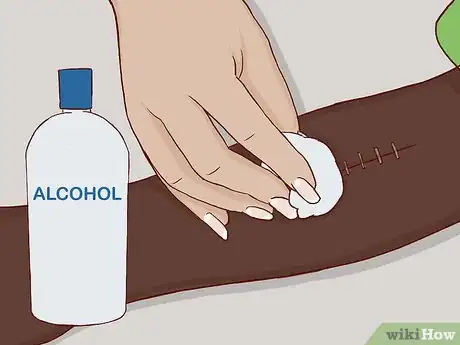
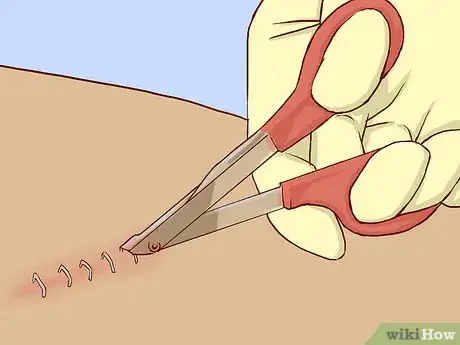
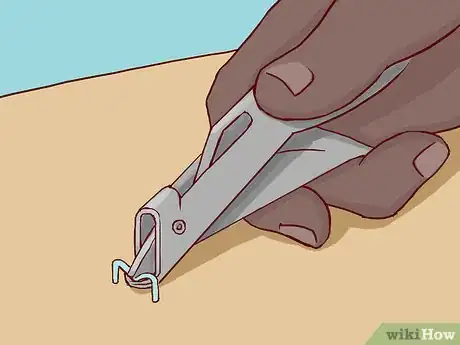
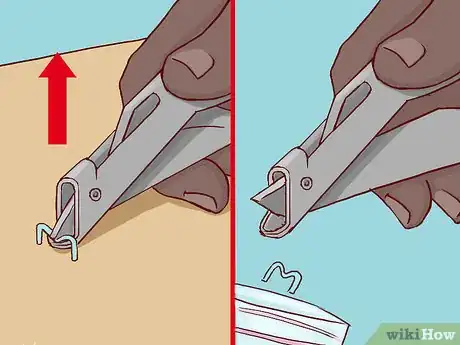
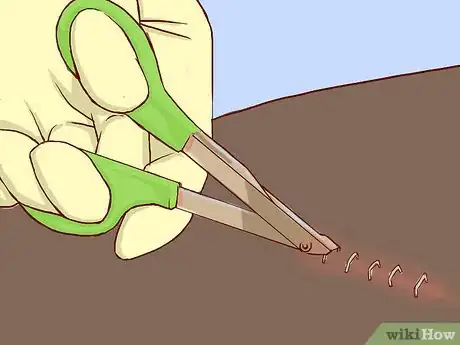
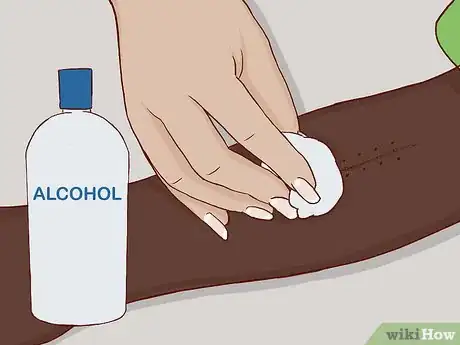

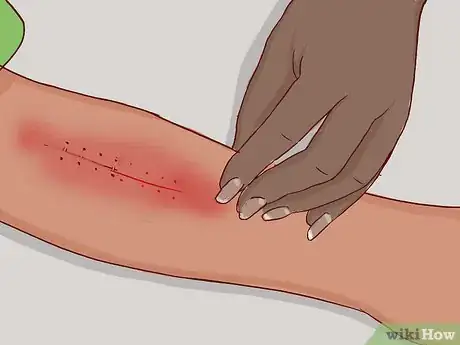
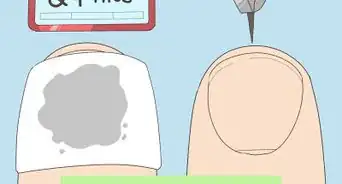
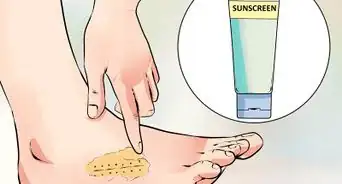

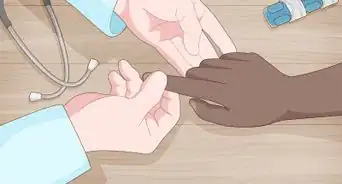
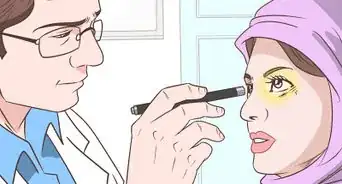

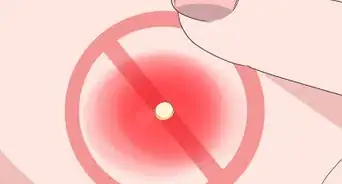

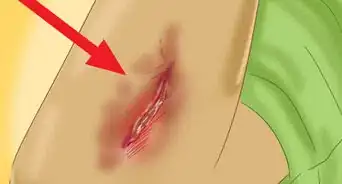
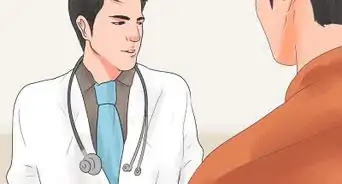
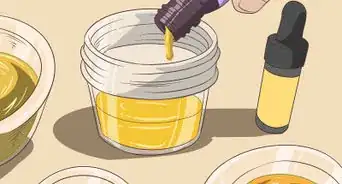











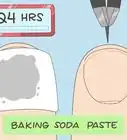
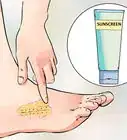

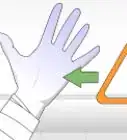




































Medical Disclaimer
The content of this article is not intended to be a substitute for professional medical advice, examination, diagnosis, or treatment. You should always contact your doctor or other qualified healthcare professional before starting, changing, or stopping any kind of health treatment.
Read More...